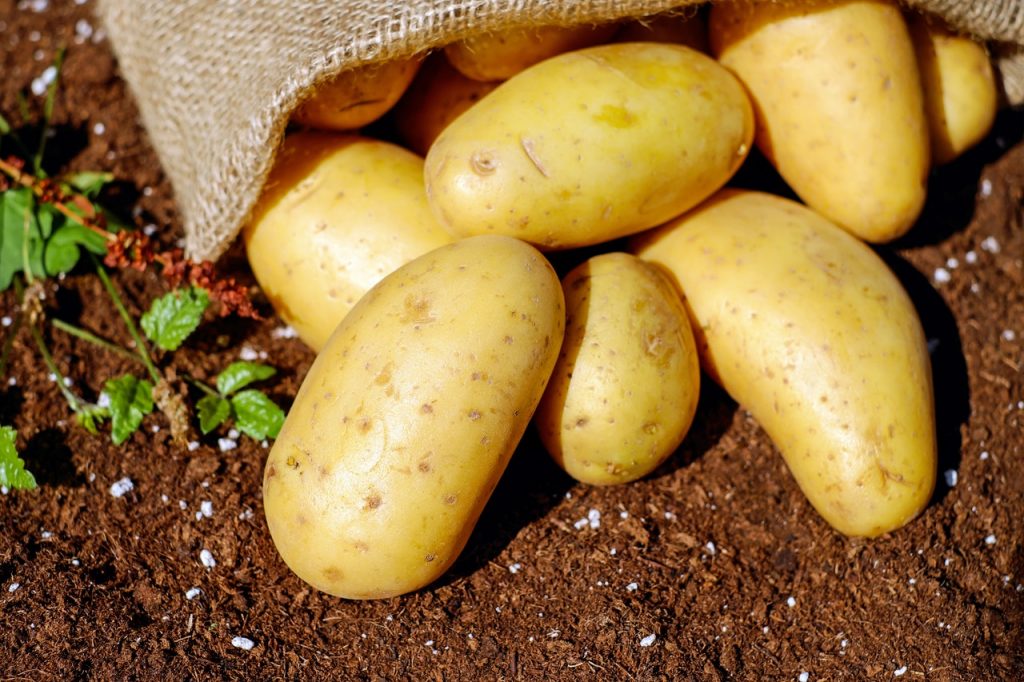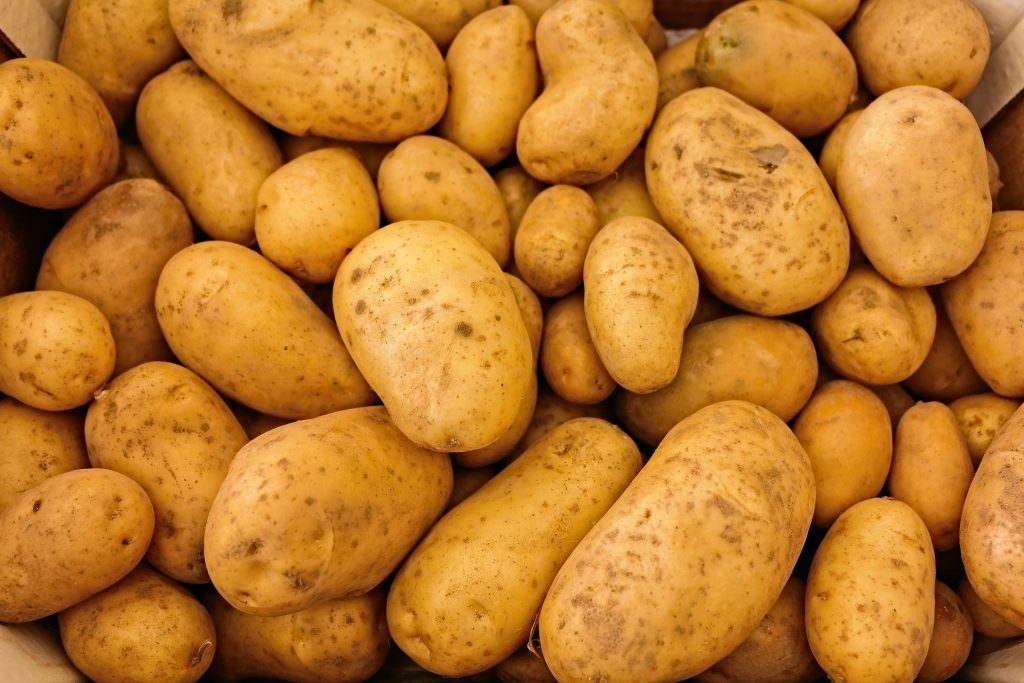Did you know?
The average American eats 111 pounds of potatoes a year. This includes 48 pounds of frozen, 34 pounds of fresh, 17 pounds of chips, and 12 pounds of dehydrated potato products.

Potatoes are one of the world’s largest food crops—after rice, wheat, and corn—as well as the most widely grown tuber crop. Native to South America, potatoes have been cultivated for at least 1,800 years and belong to the Solanaceae family.
The potato is a versatile, carbohydrate-rich food highly popular worldwide. In addition to being fat-free and gluten-free, potatoes are also a great source of several nutrients, including vitamin B6, niacin, potassium, iron, and vitamin C. In fact, a single medium sized potato provides nearly half the daily adult requirement (100 mg) of vitamin C!
Colorado Varieties
- Russets– make up most of the Colorado crop and are good for baking, frying, and mashing.
- Reds– have a smooth, moist texture perfect for soups and stews because they maintain their shape once cut throughout cooking.
- Yellows– have a golden flesh and creamy texture.
- Specialties– these include potatoes such as fingerlings, Purple Majesty, or Mountain Rose.
Seasonality
Over 100 potato varieties are grown in Colorado with most production located in the San Luis Valley. At 7,600 feet, potatoes grown in the San Luis Valley are among the highest grown in the world! In Colorado, potato harvest begins in September with about 98% of the crop going into storage before being shipped.
Selecting potatoes
- Choose potatoes that are well formed, firm, and have relatively smooth skin.
- Avoid green potatoes that have been exposed to light as they may be bitter and high in a chemical called solanine, which can be harmful to eat. Trim small green areas from potatoes before cooking.
Storing potatoes
- Do not wash potatoes before storing; dampness promotes early spoilage.
- Store potatoes in a well-ventilated cool, dry, and dark place, ideally between 45-55°F.
- Do not store potatoes in a refrigerator. Temperatures below 45°F will cause the potato starches to convert to sugars, resulting in a sweeter taste and excessive darkening during cooking.
- Potatoes can also be stored frozen, dried or canned.
Preparation
The potato is often accused of being fattening, but by itself is not high in calories. However, frying potatoes in oil or piling them high with butter and sour cream can more than double the calories in a potato product!
Another common misconception is that all of the potato’s nutrients are located in its skin, but actually the majority (>50 %) of the dietary fiber is found within the potato itself.
As with many other vegetables, the method of cooking can affect the bioavailability of certain nutrients. Nutrient losses are greatest when boiling because water-soluble vitamins and minerals leach into the cooking water.
Cooking

- Bake, steam, or microwave well-washed potatoes with the skin to retain the most nutrients.
- If you boil potatoes, use the cooking water for making gravies or soups, since it will contain valuable nutrients leached from the potatoes.
- Do not allow potatoes to soak in cold water for any length of time as the water -soluble nutrients will dissolve into the water.
Food Safety Facts & Tips
Potato Salad
In general, potatoes are a safe food to eat, but mishandling prepared potato dishes like potato salad, may result in bacterial growth— including Salmonella or Shigella which can cause illness.
Because potato salad provides a perfect breeding ground for harmful bacteria:
- Wash potatoes thoroughly before cooking. Use clean knives and cutting boards to avoid cross contamination from other ingredients.
- When making potato salad, it is best to cool the cooked potatoes to 41°F BEFORE you mix in other ingredients. Once all ingredients are mixed, place the salad back into the refrigerator immediately, until ready to serve.
- Refrigerate any leftover potato salad soon after serving. Do not allow it to stand at room temperature for more than 2 hours.
Other Cooked Potatoes
- Always unwrap leftover potatoes baked in foil since the foil can potentially create conditions favorable to the growth of Clostridium botulinum (botulism).
- Place leftover baked, boiled, or mashed potatoes in shallow containers and refrigerate promptly.
Source: http://www.coloradopotato.org/

Nutrition on a Budget
Pound for pound, potatoes are one of the best values in the produce section at just 25 cents per medium (5.3 oz.) potato!
Related Links


